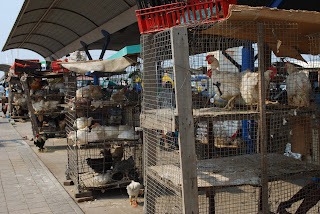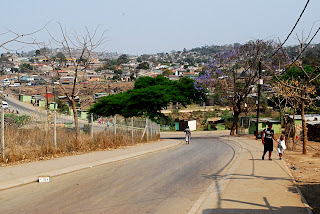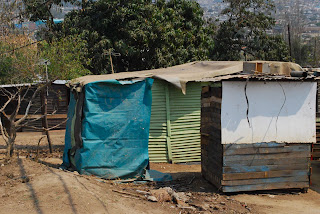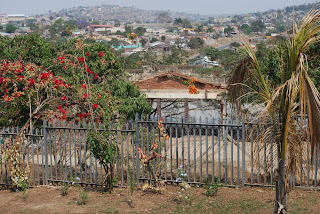Gail is a master gardener, and so the next morning, we went to Kirstenbosch, Cape Town's botanical gardens, and went on a two and a half tour. Natty loved it. He couldn't fathom why I thought a nearly three hour tour was a lot of tour. But it was a gorgeous day and the flowers were lovely. That afternoon, we took a tour over to Robben Island, a maximum security prison for political prisoners during apartheid. The ride over gives you a sense of how formidible the ocean is, as the ferry crashes through the swells, and how terrifying it must have been for the prisoners. They managed to continue the struggle even while incarcerated, educating each other and even the guards. The tours are led by former prisoners, and it's a powerful reminder of how very, very recent apartheid was. Walking through the empty halls and into the open cells is a chilling experience.
(The pictures are out of order).
 Prison blocks
Prison blocks The guard tower
The guard tower Rations: Even in the prisons with no whites, apartheid persisted.
Rations: Even in the prisons with no whites, apartheid persisted. 

 Mandela's cell
Mandela's cell
 The site of Mandela's garden, where he hid the manuscripts for his book, A Long Walk to Freedom
The site of Mandela's garden, where he hid the manuscripts for his book, A Long Walk to Freedom Our guide
Our guide



 The quarry where they worked and held secret classes
The quarry where they worked and held secret classes
 Ostrich!
Ostrich!


 Look, we still like each other even after weeks of being together every moment.
Look, we still like each other even after weeks of being together every moment. View from Cape Point
View from Cape Point

 Our guide at the botanical gardens
Our guide at the botanical gardens
 King Protea, the national flower. It's bigger than my head.
King Protea, the national flower. It's bigger than my head.






























